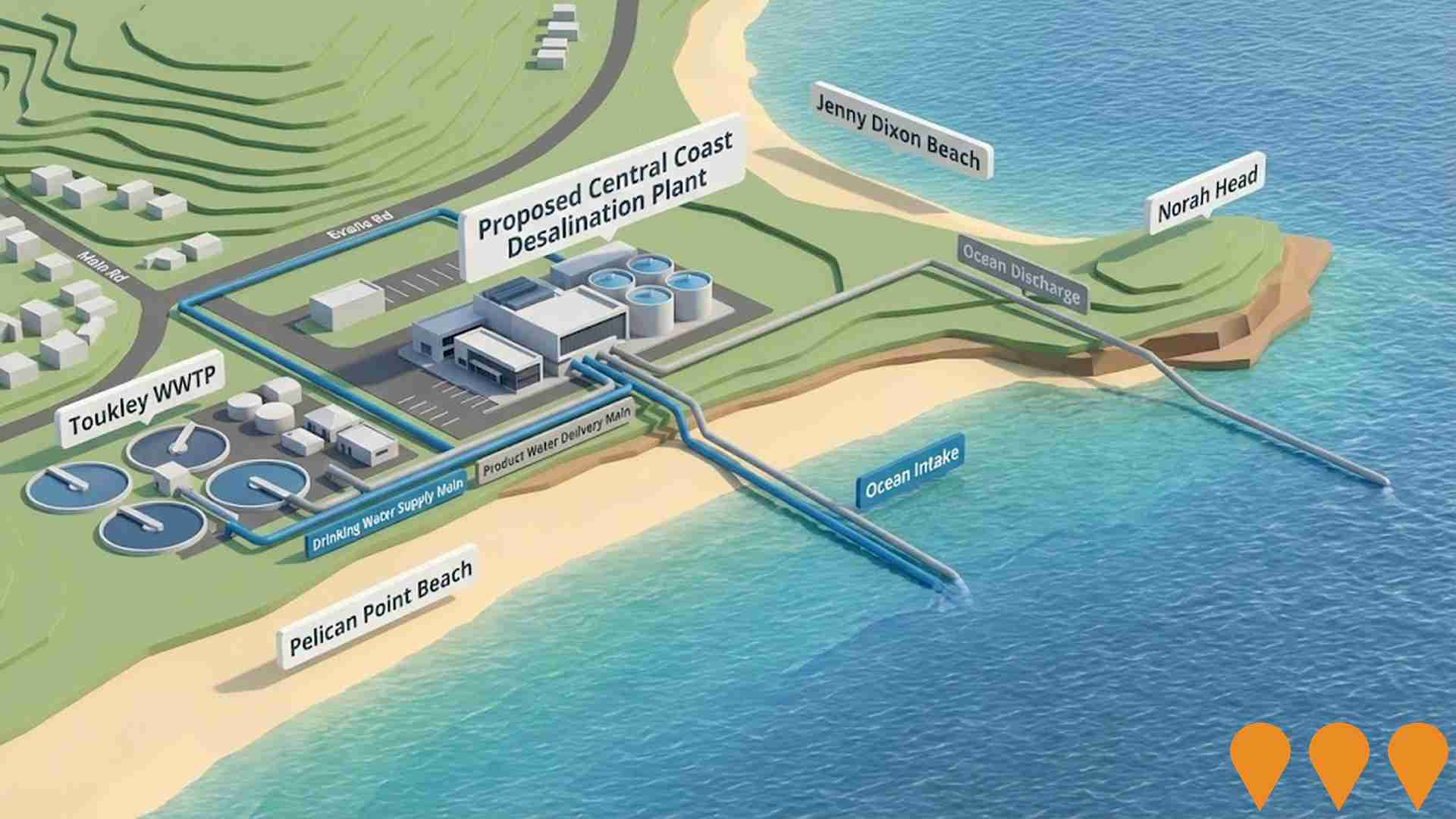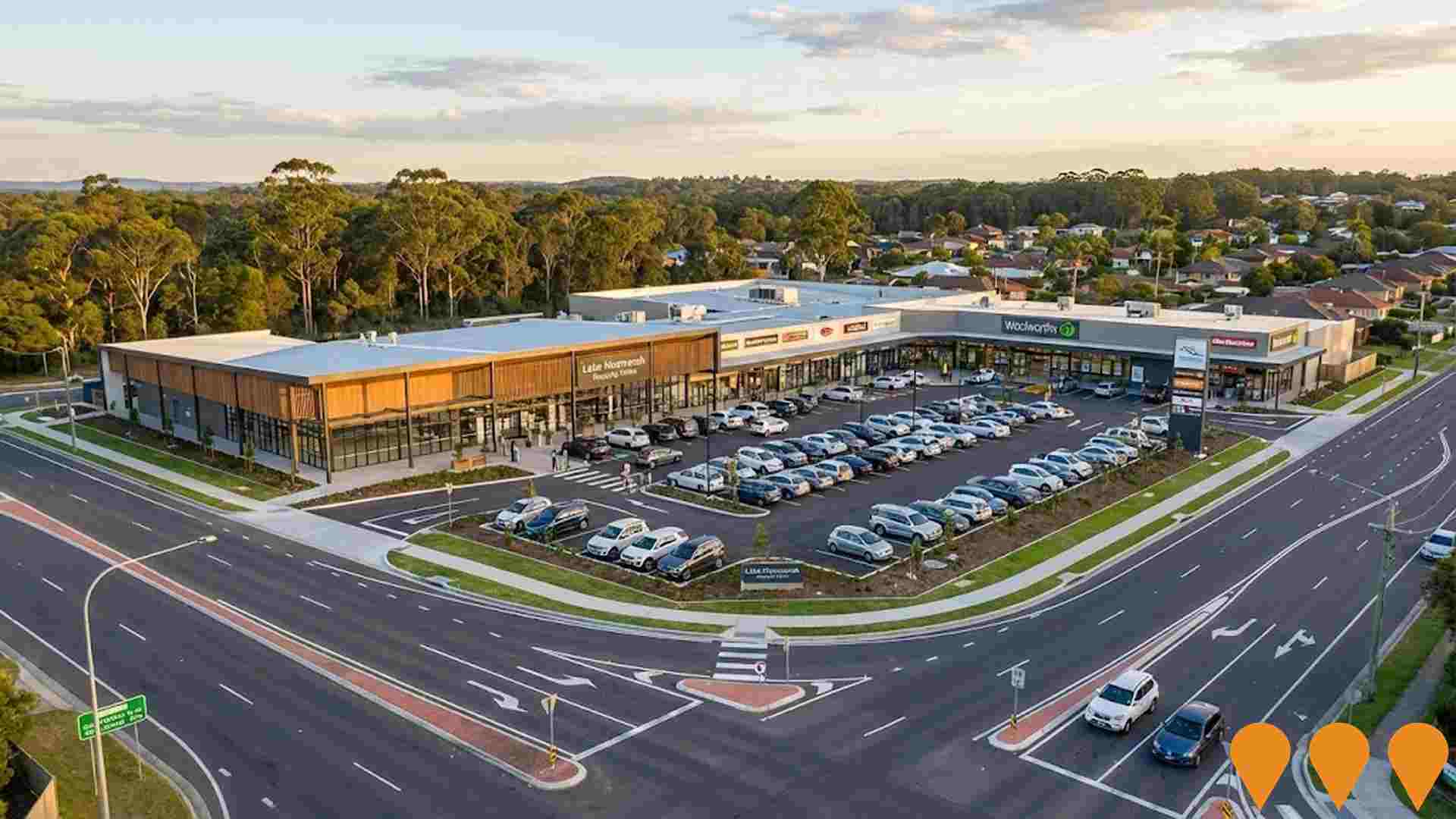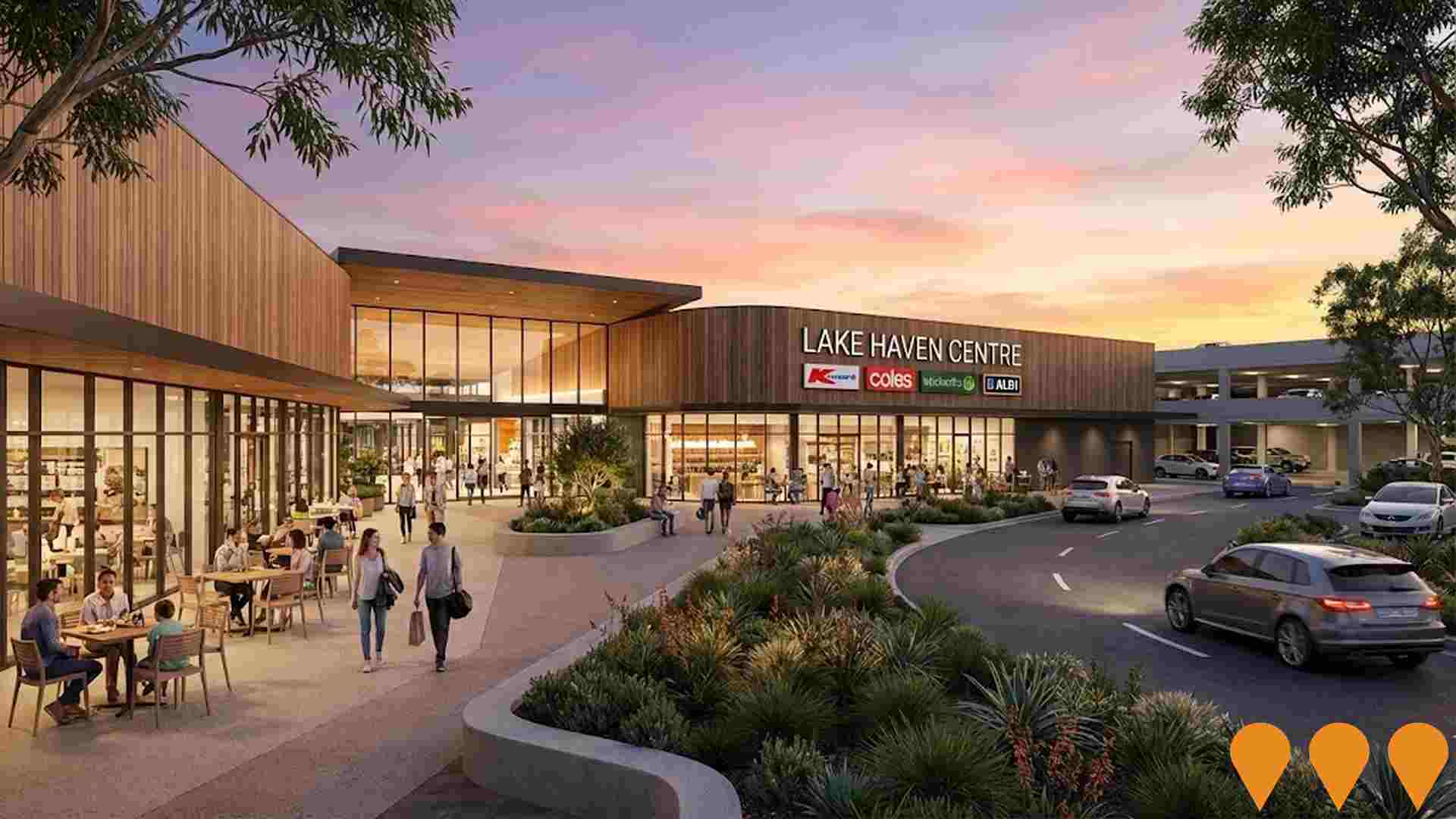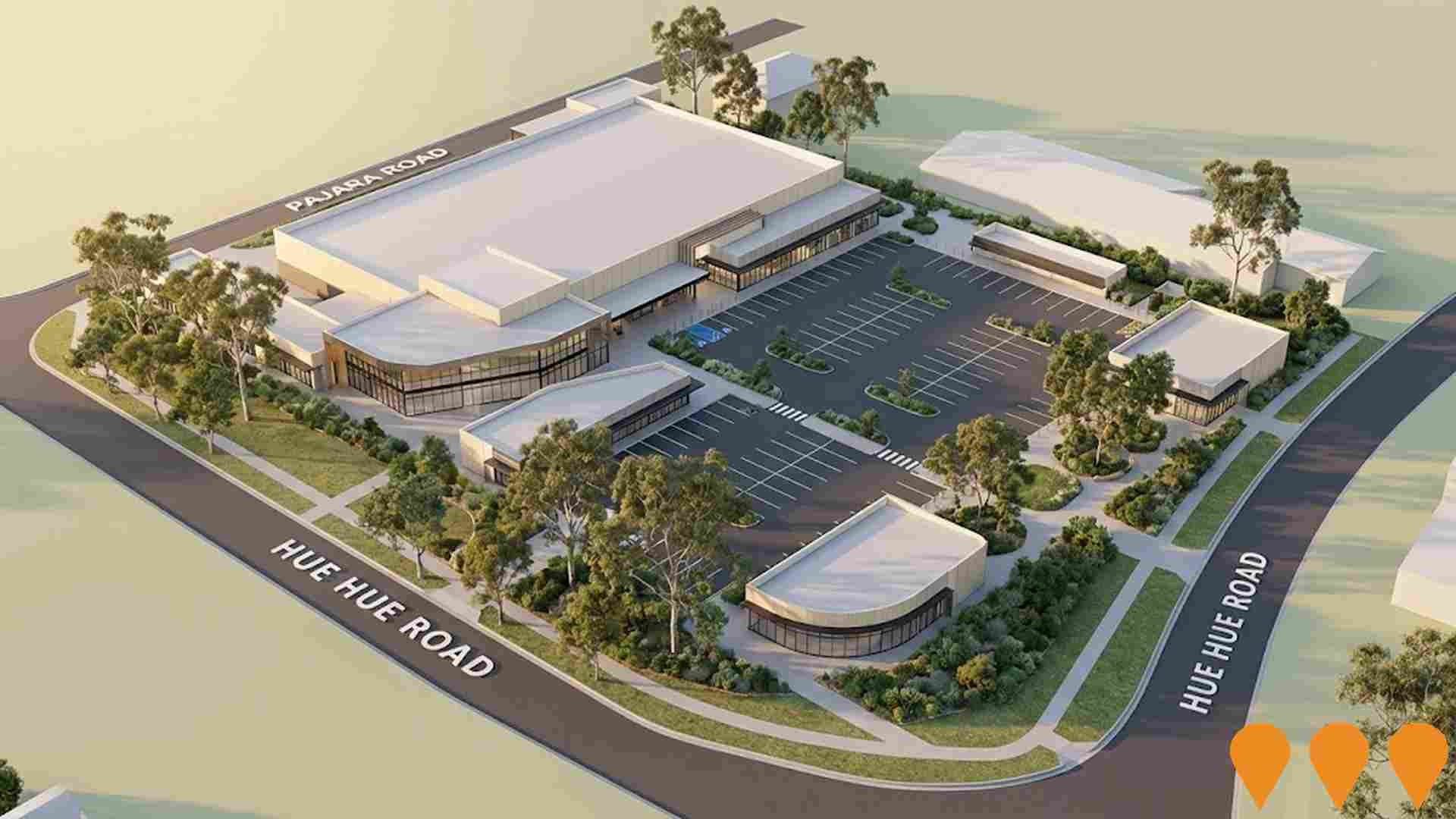Chart Color Schemes
est. as @ -- *
ABS ERP | -- people | --
2021 Census | -- people
Sales Activity
Curious about local property values? Filter the chart to assess the volume and appreciation (including resales) trends and regional comparisons, or scroll to the map below view this information at an individual property level.
Find a Recent Sale
Sales Detail
Population
Blue Haven - San Remo is positioned among the lower quartile of areas assessed nationally for population growth based on AreaSearch's assessment of recent, and medium term trends
Blue Haven - San Remo's population was 11,290 people as of the 2021 Census. By November 2025, this had increased to around 11,631 people, a rise of 341 individuals (3.0%). This growth is inferred from ABS estimates: 11,620 residents in June 2024 and seven additional validated addresses since the Census date. The population density was approximately 554 persons per square kilometer. Blue Haven - San Remo's growth of 3.0% since the census is comparable to its SA4 region (3.1%). Natural growth contributed about 73.6% of recent population gains.
AreaSearch uses ABS/Geoscience Australia projections for each SA2 area, released in 2024 with a base year of 2022. For uncovers areas, NSW State Government's SA2 level projections are used, released in 2022 with a base year of 2021. Growth rates by age group are applied to all areas from 2032 to 2041. By 2041, Blue Haven - San Remo is expected to grow by 78 persons, recording a total growth rate of 0.6% over the 17 years.
Frequently Asked Questions - Population
Development
Residential development activity is lower than average in Blue Haven - San Remo according to AreaSearch's national comparison of local real estate markets
Blue Haven - San Remo has seen approximately 21 new homes approved annually. Over the past five financial years, from FY-21 to FY-25, around 109 homes were approved, with an additional 8 approved so far in FY-26. On average, about 1.4 people moved to the area each year for every dwelling built during these years, suggesting a balanced supply and demand, stable market conditions, and accessible housing choices as new properties are constructed at an average cost of $228,000, below regional levels.
This financial year has seen $55,000 in commercial approvals, indicating a predominantly residential focus. Compared to Greater Sydney, Blue Haven - San Remo has significantly less development activity, 56.0% below the regional average per person, which typically reinforces demand and pricing for existing dwellings. This activity is also lower than national levels, reflecting market maturity and possible development constraints. New building activity consists of 72.0% detached houses and 28.0% medium to high-density housing, maintaining the area's traditional low density character with a focus on family homes appealing to those seeking space. This represents a shift from the area's existing housing composition, currently 96.0% houses, indicating decreasing availability of developable sites and reflecting changing lifestyles and demand for more diverse, affordable housing options. The estimated population per dwelling approval is 893 people, reflecting its quiet, low activity development environment.
Population forecasts indicate Blue Haven - San Remo will gain 67 residents by 2041. Based on current development patterns, new housing supply should meet demand, offering good conditions for buyers and potentially facilitating further population growth beyond current projections.
Frequently Asked Questions - Development
Infrastructure
Blue Haven - San Remo has moderate levels of nearby infrastructure activity, ranking in the top 50% nationally
Changes to local infrastructure significantly influence an area's performance. AreaSearch identified 13 projects likely impacting the region. Key projects include Lake Munmorah Shopping Centre Expansion, Colongra Sporting Complex, Waratah Super Battery, and Lake Haven Centre Redevelopment. The following list details those most relevant:.
Professional plan users can use the search below to filter and access additional projects.
INFRASTRUCTURE SEARCH
 Denotes AI-based impression for illustrative purposes only, not to be taken as definitive under any circumstances. Please follow links and conduct other investigations from the project's source for actual imagery. Developers and project owners wishing us to use original imagery please Contact Us and we will do so.
Denotes AI-based impression for illustrative purposes only, not to be taken as definitive under any circumstances. Please follow links and conduct other investigations from the project's source for actual imagery. Developers and project owners wishing us to use original imagery please Contact Us and we will do so.
Frequently Asked Questions - Infrastructure
Central Coast Desalination Plant
A proposed 30 ML/day reverse osmosis desalination plant to be built adjacent to the existing Toukley Sewage Treatment Plant. The project will provide a climate-independent water supply for the Central Coast region during severe drought, using a direct ocean intake between Jenny Dixon Beach and Pelican Point Beach and discharging brine via the existing Norah Head ocean outfall. The plant is designed to improve water security and system resilience for up to 250,000 residents.

Lake Munmorah Shopping Centre Expansion
Expansion of the existing Lake Munmorah Shopping Centre at the corner of Pacific Highway and Tall Timbers Road, delivering additional specialty retail, more parking and improved access to support growth in the Greater Lake Munmorah and Northern Lakes area.

Lake Haven Centre Redevelopment
Proposed expansion and modernisation of Lake Haven Centre, a sub-regional shopping centre owned and managed by Vicinity Centres. Current GLA approximately 43,207 sqm with anchors including Kmart, Coles, Woolworths and ALDI. As of December 2025, no development application has been lodged with Central Coast Council and no public timeline or scope has been released by Vicinity Centres.

Wyee Local Centre Rezoning
The planning proposal (RZ/4/2024) to rezone the land from RU4 Primary Production Small Lots to E1 Local Centre, and increase the building height from 8.5m to 15m, was approved by Lake Macquarie City Council on 10 February 2025. This rezoning paves the way for commercial development to expand the Wyee local centre, including a supermarket, specialty shops, food and drink venues, medical facilities, and a childcare centre, supporting community growth and up to 285 new jobs.

Colongra Sporting Complex
The Colongra Sporting Complex is a new sporting and recreation facility for the northern Central Coast, featuring two turfed sporting fields, three netball courts, a sporting amenities building with accessible toilets, a playspace, car parking, pathways, and an access road. It aims to provide opportunities for organized sports and family recreation, promoting physical and mental health benefits to the community.

Madison Rise Estate
Madison Rise is a premium residential estate by Allam Property Group situated on elevated land in Woongarrah, Central Coast. The development features 177 turnkey homes with modern inclusions, located near Mackillop Catholic College, Warnervale train station, and the M1 Pacific Motorway. The final stage is scheduled for release in early 2026.

Radcliffe Wyee
A large-scale residential subdivision offering approximately 730 new homes and land lots (over 60% sold) with open spaces, parklands, wildlife corridors, and recreational areas in a serene township setting midway between Gosford and Newcastle. Construction is ongoing, with civil works for stages continuing.

The Rise at Wyee
A new boutique residential community consisting of 50 premium, DA approved home sites with lots ranging from 321sqm up to 1039sqm. Construction is expected to commence in 2025. It offers affordable land in a family-friendly atmosphere within a growth corridor experiencing significant investment. Released 1 and 2 are sold out.

Employment
Blue Haven - San Remo shows employment indicators that trail behind approximately 70% of regions assessed across Australia
Blue Haven - San Remo has a diverse workforce with both white and blue collar jobs. The construction sector is notably prominent.
As of June 2025, the unemployment rate was 6.4%, with an estimated employment growth of 1.3% over the past year. In June 2025, 5,369 residents were employed, while the unemployment rate was 2.2% higher than Greater Sydney's rate of 4.2%. The workforce participation rate was similar to Greater Sydney's 60.0%. Employment is concentrated in health care & social assistance, retail trade, and construction.
Retail trade has a particularly high employment share, at 1.6 times the regional level. Conversely, professional & technical services have lower representation, at 2.4% compared to the regional average of 11.5%. The area may offer limited local employment opportunities, as indicated by the Census working population vs resident population count. Between June 2024 and June 2025, employment levels increased by 1.3%, while the labour force grew by 2.7%, causing the unemployment rate to rise by 1.3 percentage points. In contrast, Greater Sydney experienced employment growth of 2.6% and labour force growth of 2.9%, with a 0.3 percentage point rise in unemployment. National employment forecasts from Jobs and Skills Australia, issued in May 2025, project national employment growth of 6.6% over five years and 13.7% over ten years. However, growth rates vary significantly between industry sectors. Applying these projections to Blue Haven - San Remo's employment mix suggests local growth of approximately 6.2% over five years and 13.2% over ten years.
Frequently Asked Questions - Employment
Income
Income levels sit below national averages according to AreaSearch assessment
AreaSearch's latest postcode level ATO data for financial year 2022 shows that income in Blue Haven - San Remo is below the national average. The median income is $48,653 and the average income stands at $55,690. This contrasts with Greater Sydney's figures of a median income of $56,994 and an average income of $80,856. Based on Wage Price Index growth of 12.61% since financial year 2022, current estimates would be approximately $54,788 (median) and $62,713 (average) as of September 2025. Census 2021 income data shows that household, family, and personal incomes all rank modestly in Blue Haven - San Remo, between the 27th and 36th percentiles. Income brackets indicate that the $1,500 - $2,999 earnings band captures 37.5% of the community (4,361 individuals), aligning with the metropolitan region where this cohort likewise represents 30.9%. Housing affordability pressures are severe in Blue Haven - San Remo, with only 80.3% of income remaining, ranking at the 31st percentile.
Frequently Asked Questions - Income
Housing
Blue Haven - San Remo is characterized by a predominantly suburban housing profile, with a higher proportion of rental properties than the broader region
In Blue Haven - San Remo, as per the latest Census, 96.5% of dwellings were houses, with the remaining 3.5% being semi-detached, apartments, or other types. In comparison, Sydney metro had 83.2% houses and 16.7% other dwellings. The home ownership rate in Blue Haven - San Remo was 26.3%, with mortgaged dwellings at 41.3% and rented ones at 32.4%. The median monthly mortgage repayment was $1,733, lower than Sydney metro's $1,900 but slightly below the Australian average of $1,863. The median weekly rent in Blue Haven - San Remo was $400, higher than Sydney metro's $385 and above the national figure of $375.
Frequently Asked Questions - Housing
Household Composition
Blue Haven - San Remo has a typical household mix, with a higher-than-average median household size
Family households account for 76.6% of all households, including 31.1% couples with children, 23.2% couples without children, and 21.0% single parent families. Non-family households make up the remaining 23.4%, with lone person households at 19.6% and group households comprising 3.6%. The median household size is 2.8 people, which is larger than the Greater Sydney average of 2.5.
Frequently Asked Questions - Households
Local Schools & Education
Blue Haven - San Remo faces educational challenges, with performance metrics placing it in the bottom quartile of areas assessed nationally
The area has educational challenges with university qualification rates at 8.2%, significantly lower than Greater Sydney's average of 38.0%. Bachelor degrees are the most common at 6.2%, followed by postgraduate qualifications (1.1%) and graduate diplomas (0.9%). Vocational credentials are prominent, with 42.9% of residents aged 15+ holding them - advanced diplomas at 8.7% and certificates at 34.2%. Educational participation is high at 29.8%, including 11.5% in primary education, 8.4% in secondary education, and 2.7% pursuing tertiary education.
Blue Haven-San Remo's four schools have a combined enrollment of 1,802 students. Educational provision follows conventional lines, divided between two primary and two secondary institutions.
Frequently Asked Questions - Education
Schools Detail
Nearby Services & Amenities
Transport
Transport servicing is moderate compared to other areas nationally based on assessment of service frequency, route connectivity and accessibility
Blue Haven - San Remo has 68 active public transport stops, all of which are bus stops. These stops are served by 46 different routes that together facilitate 942 weekly passenger trips. The area's transport accessibility is rated as excellent, with residents on average located 176 meters from the nearest stop.
On average, there are 134 trips per day across all routes, which equates to approximately 13 weekly trips per individual stop.
Frequently Asked Questions - Transport
Transport Stops Detail
Health
Health performance in Blue Haven - San Remo is well below average with a range of health conditions having marked impacts on both younger and older age cohorts
Blue Haven - San Remo faces significant health challenges, as indicated by health data. A variety of health conditions affect both younger and older age groups.
The rate of private health cover is notably low at approximately 48% (~5,536 people), compared to the national average of 55.3%. Mental health issues and asthma are the most prevalent medical conditions in the area, affecting 11.9 and 10.3% of residents respectively. Conversely, 61.2% of residents report having no medical ailments, slightly lower than the Greater Sydney average of 61.5%. The area has a lower proportion of seniors aged 65 and over at 14.4% (1,673 people), compared to Greater Sydney's 22.3%. Health outcomes among seniors are broadly similar to those of the general population.
Frequently Asked Questions - Health
Cultural Diversity
Blue Haven - San Remo is considerably less culturally diverse than average when assessed alongside AreaSearch's national rankings for language and cultural background related metrics
Blue Haven-San Remo, surveyed in June-August 2016, had low cultural diversity: 89.6% were Australian-born, 92.1% were citizens, and 95.3% spoke English only at home. Christianity was the predominant religion, at 49.7%, compared to Greater Sydney's 56.2%. Ancestry showed Australians at 33.1%, English at 30.0%, and Australian Aboriginal at 6.9%.
Notably, Maltese (1.0% vs 1.0%), Maori (0.9% vs 0.6%), and Samoan (0.2% vs 0.1%) were disproportionately represented compared to regional averages.
Frequently Asked Questions - Diversity
Age
Blue Haven - San Remo hosts a young demographic, positioning it in the bottom quartile nationwide
Blue Haven - San Remo's median age is 34 years, which is lower than Greater Sydney's average of 37 years and considerably younger than Australia's median age of 38 years. Compared to Greater Sydney, Blue Haven - San Remo has a higher proportion of residents aged 5-14 (14.2%) but fewer residents aged 35-44 (12.1%). Between the 2021 Census and the present day, the proportion of residents aged 75 to 84 has grown from 4.5% to 5.2%, while the proportion of residents aged 45 to 54 has declined from 13.1% to 11.7%. By 2041, population forecasts indicate significant demographic changes for Blue Haven - San Remo. The 85+ cohort is projected to grow by 105%, adding 204 residents to reach a total of 399. Residents aged 65 and above will drive 97% of the population growth, highlighting trends towards demographic aging. Conversely, population declines are projected for the 55-64 and 35-44 age cohorts.

